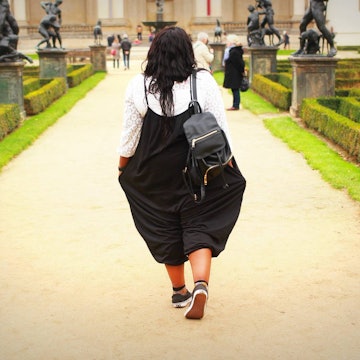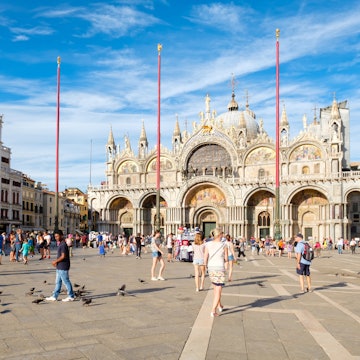
Every perfect Rome day begins with a soul-nourishing coffee. Try the burnished surroundings of Tazza d’Oro on Via degli Orfani 84, where locals and tourists have been taking cappuccini at the bar since it opened in 1946. In summer, crowds flock here for the granita di caffè, a sublime confection combining coffee, crushed ice and whipped cream.
Just across the piazza is the Pantheon (Piazza della Rotonda), a Roman temple converted into a church. This is among the world’s most audacious and inspirational pieces of architecture, a great unreinforced concrete dome, with an oculus in the roof supplying natural light from the heavens. When it rains, a column of rain falls and the water drains away into holes in the floor.
From here it’s a two-minute stroll to Piazza Navona, a square as big as a stadium (it was in fact built on the former Domitian's stadium, which dated from 86AD), and crowned by the Bernini’s fantastical Baroque fountains, complete with rearing horses, muscular gods, and palm trees. Don’t neglect to nip in to nearby San Luigi dei Francesi (Piazza San Luigi dei Francesi), to see its Caravaggio paintings.
Just south of here is Campo de’Fiori, with its food and flower market. On the corner, Forno di Campo de’ Fiori sells crispy, hot-from-the-oven pizza rossa (topped with tomato and oregano). The adjoining square, Piazza Farnese, has a contrasting formal elegance; its two marble fountains are made from recycled Roman bathtubs and are overlooked by the Michelangelo façade of the French Embassy.
Just east of here is the Ghetto. The ancient Jewish district always feels tranquil despite its central position, and has an atmosphere all of its own. Il Portico (Via del Portico d'Ottavia), alongside the broken portico of an ancient Roman market, offers traditional Roman-Jewish cuisine, such as the flattened, fried, tender-on-the-inside carciofi alla giudia (artichoke Jewish-style).
It’s a short walk from the Ghetto to the sweeping staircase that leads up to Capitoline Hill from Piazza Venezia. The hill is topped by Michelangelo’s Piazza del Campidoglio, an artistic pinnacle as well as a geographical one. From behind here is a view of the entire Roman Forum, the powerhouse of the Empire. At the far end of the broken remains lies the Colosseum, the iconic, extraordinarily preserved stadium that once hosted gory entertainment for the Roman masses.
From the Colosseum, cutting across the ancient racecourse Circus Maximus, it is a wonderful stroll up the Aventino, one of Rome’s seven hills, home to a dreamily upmarket residential district with deep-green trees shading its orange-ochre buildings. Here lies Rome’s loveliest, yet off-the-beaten-track church, the simple, majestic Santa Sabina (Piazza Pietro d'Illiria 1). There are views over the cityscape from the neighbouring orange garden, and nearby a hole in the doorway of the Priory of the Knights of Malta (Piazza dei Cavalieri di Malta) supplies a remarkable surprise – a surreal and perfect view of St Peter’s.
In the evening, it’s tricky to say which is more perfect: Trastevere, dining at the delicious, lively pizzeria Dar Poeta (Vicolo del Bologna 45) and sipping mojitos at perennially hip Freni e Frizioni (Via del Politeama 4-6); or the edgier district of Pigneto, a magnet for arty bohemians, where Primo on Via del Pigneto 46 offers creative Roman cuisine, and café-bars lining the same street are the epitome of off-beat Roman cool.
And so to sleep? Try the gorgeously over-the-top Hotel Sant’Anselmo (Via di Santa Melania 19, Aventino), artistic villa Buonanotte Garibaldi (Via Garibaldi, Trastevere), or restrained luxury at Margutta 54 (Via Margutta 54, Tridente).
















